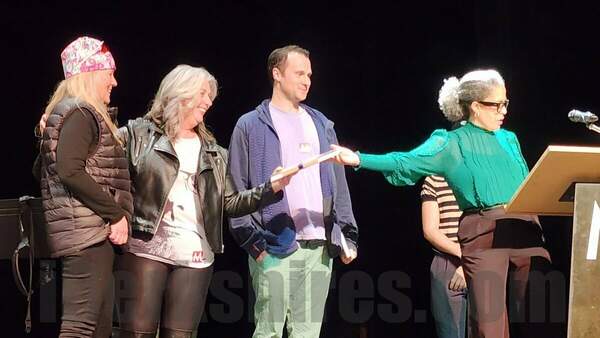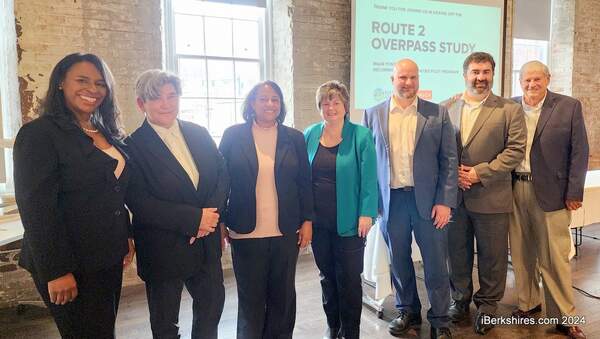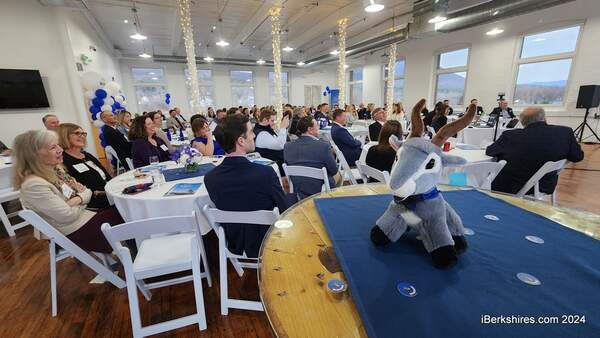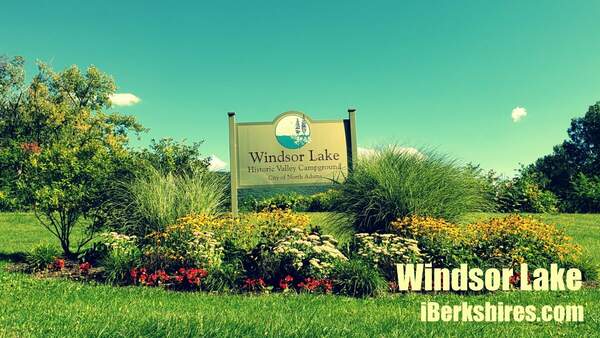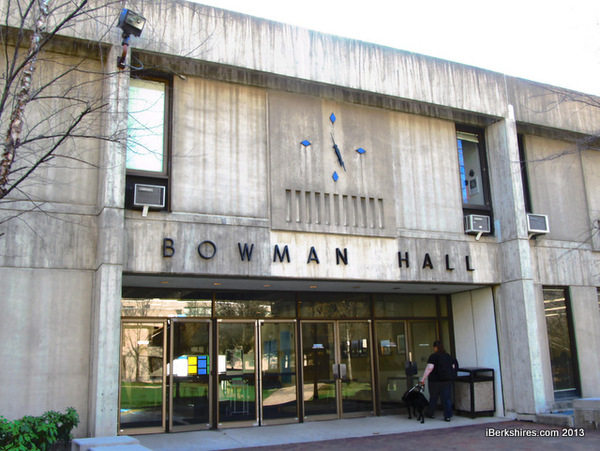
MCLA Continues to Transform Campus Facilities
 The $2 million facilities building is expected to be completed this spring. The structure will bring all the trades at the college under one roof. The $2 million facilities building is expected to be completed this spring. The structure will bring all the trades at the college under one roof. |
NORTH ADAMS, Mass. — Masachusetts College of Liberal Arts completed one building last fall — then jumped immediately into another.
While the four-story Fiegenbaum Center for Science and Innovation's opening was the most dramatic alteration of the campus, it's really part of an ongoing modernization over the last decade.
The new facilities building begun last September is nearly complete, and renovations are expected to begin this spring at Bowman Hall.
"That will be the transformation of one of our other prime academic buildings," college President Mary Grant said recently. "That's very important to what we're doing."
Vice President for Administration and Finance James Stakenas said recently that the goal is to have Bowman open for summer classes by the summer 2015.
But first up is the completion of the $2 million facilities building on Ashland Street, where the former Shapiro & Sons scrapyard had been located.
The yellow and gray building, with a design by EDM informed by the science center, was prompted by changes beginning two years ago with the creation of a marketplace in the Amsler Campus Center.
That forced the relocation of campus police to the former Brewer Perkins, which in turn required new space for the facilities office there.
The intent had been to renovate the 26,000-square-foot warehouse that Shapiro had used, but that was determined to be inefficient: It would have required "building a building around a building," said Stakenas.
For a million less, the 12,000 square-foot building will incorporate all the trades on campus with workshops, meeting areas and more.
"We have nice shops for all of our skilled trades, plumbing, electrical, paint shop, carpentry ... a heated garage in which to put our trucks," Stakenas said. "It really is the perfect-sized building for our institution and it's going to a group of men and women who work very hard for us day in and day out."
Both Stakenas and Grant stressed the importance of having a centralized location for crews and equipment that have been spread around the campus.
"It may not have sort of all the bells and whistles as the science building, but to be able to have all of our departments that support the institution ... all in one place is a big step forward," Grant said.
The departments that once had meet in a hallway will have meeting space, computer stations for ordering, management offices, dedicated shops and storage, and showers.
The structure also continues redevelopment along Ashland Street by the college, city and private development.
"Now we have both sides of the street, it's a lot cleaner and a lot nicer," Stakenas said. "It's a very lovely facility."
The college will hold a ribbon cutting in April; a contract should be awarded the same month for Bowman.
"We finished the science building, went immediately into this, and as this comes to a positive conclusion, we're going to be starting Bowman Hall," Stakenas said.
The Bowman project was expected to be started last year, but as the deadline approached for the science center, it was decided EYP Architecture & Engineering, architect for both buildings, would concentrate on Feigenbaum.
"We turned our full attention to finishing the science center," Stakenas said.
Funding for Bowman was decided in 2008, part of the $54.5 million higher education bond. The construction cost for the science center was around $30 million, leaving around $15 million for Bowman.
Unlike the new science center and facilities building, the major improvements at Bowman won't be outwardly visible. The concrete exterior is considered to be in good condition and it won't be changed.
But inside, classrooms will be reconfigured, the technology will be updated and the layout will be altered.
The visual arts and math departments will return to new offices and updated classrooms and studios; joining them will be computer science (with setups for hardware and software programs) and the dean and vice president for academic affairs.
Press, now located next to Gallery 51 on Main Street, will be settled on the third floor.
The interior, like Feigenbaum's, takes a page from the first major renovation on the campus in some years: the renovation of the century-old Murdock Hall, completed eight years ago.
"Murdock was a challenge to renovate," Stakenas said, but "that became our model of what we wanted for educational spaces."
The layout will include nooks for students and new concession area on the ground floor for grab-and-go foods.
 The Feigenbaum Science Center may be a crowning achievement, but the college isn't resting on its laurels. More renovations for existing buildings are in the works. The Feigenbaum Science Center may be a crowning achievement, but the college isn't resting on its laurels. More renovations for existing buildings are in the works. |
A major element will be redesign of the main foyer off the quad. The "hole" in the center looking down on to the ground floor will be closed in, a gallery area installed and the orientation skewed toward the desk for the building's secretary.
"With the limited budget, we had we wanted something dramatic to happen," Stakenas said.
He said the college has moved toward building, rather than department secretaries, to reflect changes in communications and needs.
If there's enough in the budget, the most dramatic change could be the elimination of Rooms 101 and 102, the large below-ground lecture halls.
That would open the area on the ground floor for smaller classroom and office space. A more modern, albeit slightly smaller, lecture hall was included in the new science center.
"We are trying to be as efficient as possible to make the funding go as far as possible," Stakenas said, including having demo and construction in the same bid.
What will occur is a physical connection between the half-century old Bowman and the campus's newest building across the street. The new walkways will be handicapped accessible from the back of the building toward the Amsler Campus Center and will turn into a sidewalk along Montana toward the science center.
Bowman and the facilities building are just the latest upgrades since Murdock; Smith House had a facelift in 2007, marketplace and new cafeteria were installed in the campus center, Hoosac Hall had a $6.9 million revamp and a new multi-use lobby was constructed for the dormitory towers on Church Street. There has also been an effort to upgrade the campus' electrical and technological infrastructure, along with greater emphasis on green alternatives and renovations of outlying administration buildings and the college's West Shaft Road athletic fields.
Next up? The Church Street Center. The college has received a $30,000 grant from the Massachusetts Cultural Commission for a feasibility study of the building's music and performance potential.
"We like the sanctuary, it's a good performance space," Stakenas said of the former synagogue, but the stage needs work, music need more studio and practice space, and the building needs a new HVAC system. "It will give us a much nicer space for our performing arts and use for the community."
The continued capital improvements are part of a master plan for the campus, with the Church Street Center, Mark Hopkins and Venable Hall as the next in focus.
Grant said the college is doing more than just buildings, it's looking at innovative partnerships, particularly the science building, connecting to the community through programs and building usage, and raising funds to ensure students will be able to attend the college.
"We're continuing to keep looking for philanthropy in terms of supporting student scholarships," she said. "There's important work ahead but we're just excited about the future of the institution."
Tags: building project, capital projects, MCLA, renovation,

